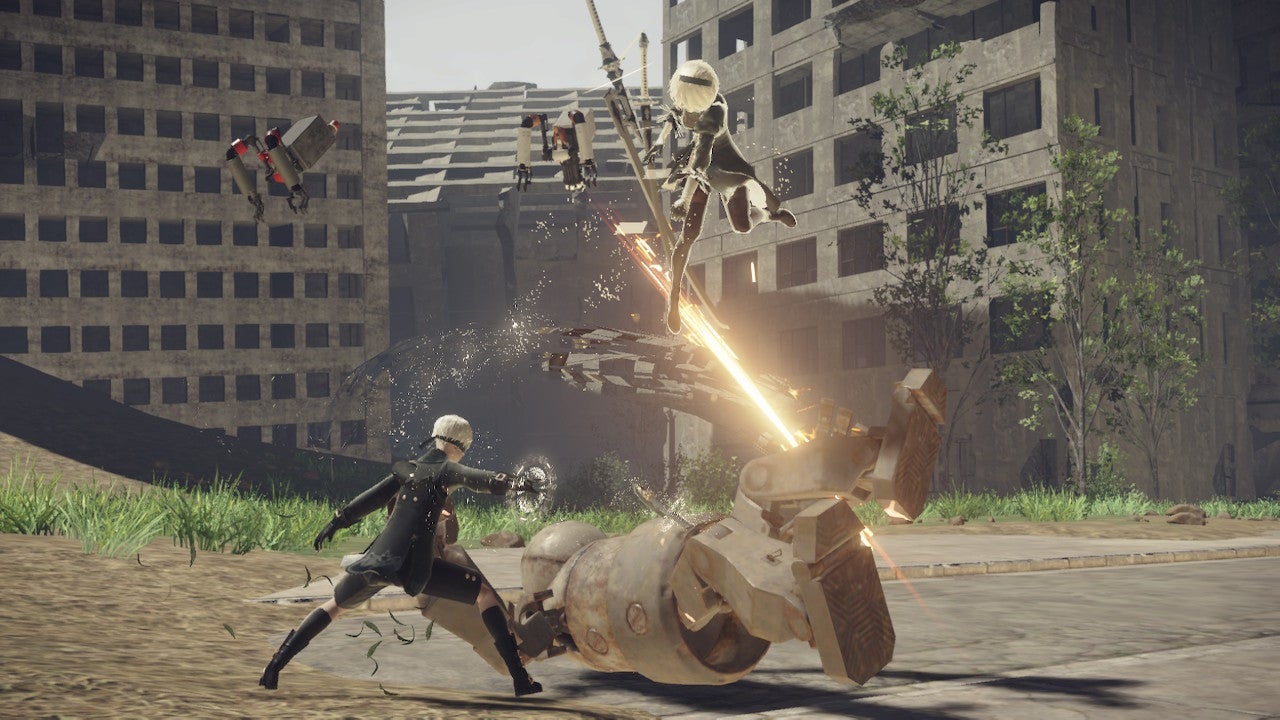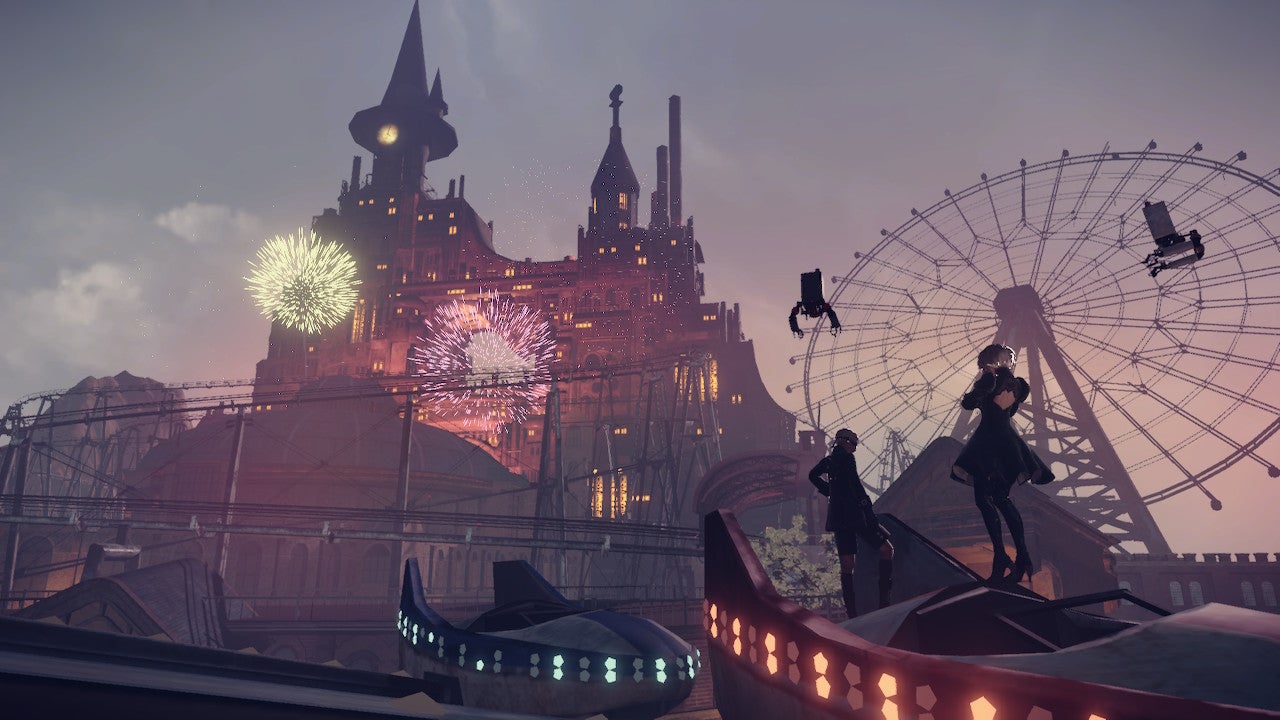Luckily, its 2017 sequel Nier Automata improved upon that by providing stories that flesh out the world and its inhabitants in ways that felt fundamental to fully appreciating the main story. And I can’t think of a game whose side quests fit better on the portable console that is the Nintendo Switch. The hook of the Switch is that you can play it on the go or at home, though we can all probably admit that we mostly either lean towards one or the other. But the benefit of playing on the go is being able to fit in short snippets of playtime here and there: when you’re commuting, when you’re travelling or (God help us) when you’re on the loo. And with that comes the flexibility of engaging with games in different ways depending on whether you’re at home or out and about. Or otherwise engaged. One thing RPGs, particularly JRPGs, are known for is that they are long. Very long. Stupidly long, in some cases. Nier Automata isn’t actually that long by typical JRPG standard – with an average of roughly 21 hours playtime – but if you want to fully complete it, and get all the endings, you can expect to invest about 60 hours of your life into the title. So, obviously a lot of those bonus 40 hours will come from the side quests, which I frequently found to be more engaging than the main story. If you haven’t played Nier Automata, the general concept is that you play as three different androids as they navigate what existence means to each of them, and there’s some poetic stuff about the soul in there, too. Maybe. Oh, and also you’re fighting a war against a seemingly never-ending army of machines – all of which are supposedly innately evil, but of course things aren’t so simple. For the most part, the main storyline is successful in covering these themes, but it’s the side quests that made me feel truly invested in the world: the game encourages you to figure out what you’re fighting for, particularly because there are some twists and turns that force the protagonists to question their motives. And you don’t really see the world through all the lenses, from all the relevent perspectives, without engaging in the non-essential content and wandering from the critical path. Of course, along the way you meet a variety of interesting characters, like Pascal (the leader of the pacifist machine village), or Anemone (the leader of the resistance). Their stories are partially explored in the main quest, but side quests involving the supporting cast is where things really get interesting. And it’s here that the writing comes into its own, too – where the ragtag bunch of characters in the game are elevated from merely NPCs to actually thought-out entities with their own hearts, souls, and motivations. Personally, I love the idea of microdosing on emotional, sometimes-uplifting-sometimes-depressing stories while I’m on the move. Don’t mind me, crying on the bus – Pascal just said something heart-wrenching that’d have even Schopenhauer dabbing at his eyes. Because you can play the Switch anywhere, the ideal RPG experience for me, personally, would be to tackle the main story while docked at home. And then tackle all those side quests while I’m commuting somewhere, so I can fully appreciate everything the game has to offer. And level my Androids when I’m waiting for the bus. I don’t always like to do side quests, particularly if they don’t offer any interesting narrative beats. But the world of Nier is such an interesting one I picked up every single one I could on my last playthrough. Take this one side quest involving A2, the third protagonist, and the pacifist machine village. Out of the three player characters, A2 potentially hates the machines the most – spending most of her time killing them with no rhyme or reason. For plot reasons though, she is brought to the machine village, much as she might not want to be there. The side quest in question, called Play With Us, sees some machine children asking A2 to build them something to play on. Gameplay-wise, it results in the most uninteresting thing that a video game can make you do (it’s a fetch quest), but I wasn’t fussed because the game itself is fun to play, and the simple but important payoff is worth it. Once you get everything you need, one of the machines builds a slide for the children to play on. In turn, they are incredibly grateful, and give you a present as thanks. With Pascal also coming in person to thank you himself, he remindes A2 to not overwork herself. This is all rounded off with A2 talking to herself, culminating in her musing on the nature of “a group of pacifist machines, huh?” There’s a spark of realisation in her, the gestation of something important – something that does the groundwork for a major narrative beat, later on. It’s not a mission you have to do at all, but it feels like you should just to add to that character development. One of my favourite side quests – yes, once again, a simple fetch quest – involves the character Operator 6O. While 2B, our first protagonist, gets to explore earth in all its dilapidated beauty, 6O is fixed to her spot in a space station, never getting to visit the space rock we call home, despite her fascination with it. In this particular quest, she asks 2B to find her a particular rose. Once you do that, 6O is incredibly grateful, and imagines all of the nature that might still exist on the planet, cataclysm nonwithstanding. It’s not until later, during the main story, where this pays off. At a certain point, pretty much all of the androids are taken over by a virus, including 6O. If you managed to find her the rose – despite her slow and upsetting corruption that eats away at everything that she is – she thanks 2B. A moment of clarity in the fugue. And holy shit is it such a sad moment. But. Neither of these side quests might fit into your general routine. We all only have so much time in the day, and sometimes we don’t have the opportunity for side quests – despite them offering some beautiful pieces of storytelling, some neat gear, or just a touch more EXP. The Switch, however, lets you find time in ways PS5 and Xbox Series S/X just can’t. Sure, I can admit that the gameplay aspects of the quests mentioned above aren’t the most exciting in the world, but they’re worth seeking out and wrapping up to find out more about the characters that inhabit said world. People might make remarks about the Switch just being ‘a home for games you already own from four years ago’, but there are plenty of adults who own Ninty’s plucky little hybrid console for exactly the reasons I’m outlinning above: so they’re able to pick it up for half an hour, and put it down again. I’ve put in a couple of playthroughs of Nier Automata since its release, and if I can manage it, I’ll try to fit in another when it comes to Switch (with the added justification that I can buy another copy because my partner has never played it, but does own a Switch). The thing is though: I don’t have as much time as I used to, so while I’m at home, I might not be able to play any of the side stories. But those moments where I’m on a bus, or a train, or a plane: those will be the times when I cry over silly little robots just trying to make their way in the world, half an hour at a time.



